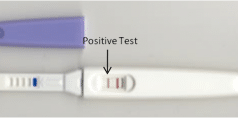
Medicaid is a public insurance program that offers coverage for health care to low-income individuals and families. This includes people with disabilities, children, parents, pregnant women, and seniors. Medicaid is funded by both the states and the federal government, with every state operating its own program within certain federal guidelines.
The importance of this program is incredibly high. Nowadays, even if a person snatches a Simply Meds discount code or books a free clinic visit, it may struggle to cover all medical expenses.
Since the guidelines for qualifying for Medicaid are broad, states have a lot of flexibility in how they administer and structure their programs. Benefits also vary widely between states.
Medicaid is not the same as Medicare, although the two are often confused, and there are overlaps. Medicaid is federally funded insurance for people who are 65 and older and some people who have disabilities. Around 10 million low-income seniors and people with disabilities are enrolled in both programs. They’re known as dual eligible.
Medicaid Eligibility
Qualifying for Medicaid is based on the fact that it’s an entitlement program. Anyone meeting eligibility rules can potentially enroll for coverage. To receive federal funding, a state does have to cover certain groups that are mandatory.
These include children through age 18 who are in families that are below a certain percent of the poverty line and pregnant women who are below a certain percent of the poverty line. Most seniors and people with disabilities who receive assistance through the Supplemental Security Income program are eligible.
States might also be able to receive Medicaid funds to cover what are called optional populations. These are people who might have incomes that are above the limits for mandatory coverage.
What Is The Spend-Down Program?
If you need Medicaid coverage and your income is more than the income guidelines in your state, they may offer what’s known as a spend-down. This is for people who don’t meet eligibility requirements.
The spend-down program is also known as a medically needy program or the Medicaid Excess Income Program. Not every state has a spend-down program available, so you have to contact the Medicaid office local in your state.
In states with a spend-down program, you may be able to use it to qualify for Medicaid coverage of your nursing facility stay or for community-based and home-based waiver services. If your state doesn’t have a spend-down program, it should have income guidelines that are more generous for people who need nursing home care compared to those that don’t.
The spend-down program is based on the idea that you have to meet certain asset and income requirements, depending on your state of residence. If you meet all other requirements but not an asset or income limit, you might still be able to qualify for an asset spend-down.
How It Works
While again, it can vary depending on the state; in general, if you accumulate medical bills that are more than your excess income that’s above the eligibility for Medicaid, you can spend your excess income on medical bills so you can qualify for Medicaid for your remaining medical expenses.
You spend your income or assets that go over the eligibility limits on specific medical and wellness expenses. This, in turn, brings your income or assets to a level qualifying you for Medicaid.
It gets complicated, so a caseworker will take your monthly income and then make particular deductions to calculate your countable income for purposes of Medicaid. Your excess income is the difference between your countable income and the Medicaid limit. Your deductions vary depending on the qualifying criteria relevant to you for the excess income program.
As an example, the deduction for someone who’s pregnant is different than someone who qualifies because of a disability.
Which Bills Can Apply Toward A Spenddown?
Most medical or wellness expenses can be counted toward a spend-down. Medical expenses such as lab tests, doctor’s visits, dental and eye exams, or similar things can apply. Prescription drugs can also qualify, and providers don’t have to be Medicaid-approved.
If you have to pay for transportation to medical appointments, like taking a taxi or Uber, you can count these, but you need to keep the receipts.
If you see a therapist or have a home health aide or nurse, your expenses can qualify, but the Community Alternative Services Agency or Social Services have to approve the personal care aides.
All deductibles and copayments are qualified expenses, whether through private insurance or Medicare.
If you have Medicare or private insurance, you can only apply portions of the bill not covered under those.
Finally, if you spend on surgical or medical supplies, it’s covered, but cosmetic procedures don’t count.








